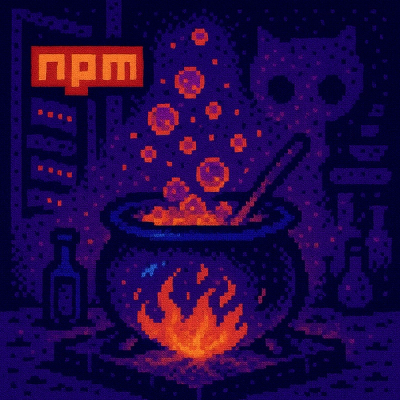
Research
/Security News
9 Malicious NuGet Packages Deliver Time-Delayed Destructive Payloads
Socket researchers discovered nine malicious NuGet packages that use time-delayed payloads to crash applications and corrupt industrial control systems.
The crc_tool have been created by Texas Instruments to support the need to calculate CRC values of specific flash regions during the build process. The calculated CRC values will be inserted in the ELF file. This was introduced to support the device families CC23xx and CC27xx.
crc_tool is a tool with two primary use cases:
The Python script relies on the external library LIEF
This libary is included in the packaged executable.
This use case is accessed through using the subcommand patch-image when invoking crc_tool.
This use case will:
You then need to specify the location of an input file on disk. Currently the tool has only been tested with ELF files. Other file types may be added in the future.
The following command line options are available in the patch-image use-case.
| Name | Usage | Required? | Default |
|---|---|---|---|
--elf {file location} | Specify location of input file | Yes | N/A |
-p {prefix} / --symbol-prefix {prefix} | Specify prefix of begin / end symbols in ELF file | no | __crc_section |
-o {file_name} / --ouput {file_name} | Specify name of output file | No | patched.out |
--verbose | Output all available logging information | No | N/A |
--quiet | Output no logging information, only fatal errors | No | N/A |
For crc_tool to know where to insert crc32 values
it needs to be able to find symbols in the ELF file which matches the stated
prefix. All symbols without a matching prefix are ignored.
Symbols need to come in pairs with matching names, except for _end, and _begin suffixes.
Symbols without a suffix, or without a matching counterpart are ignored..
If you have the _end values of two sections which within the same 4 byte range, meaning that they would overwrite eachother's CRCs, then an error is thrown.
The value of the _end symbol must be greater or equal to the _begin value, otherwise an error is thrown.
In a ticlang linker file symbols can be added like so (Note the prefix differing from above default value):
__my_prefix_boot_cfg_begin = 0x4E020000;
__my_prefix_boot_cfg_end = 0x4E02000B;
__my_prefix_main_begin = 0x4E020010;
__my_prefix_main_end = 0x4E02074B;
__my_prefix_user_record_crc32_begin = 0x4E020750;
__my_prefix_user_record_crc32_end = 0x4E0207CB;
__my_prefix_debug_cfg_crc32_begin = 0x4E0207D0;
__my_prefix_debug_cfg_crc32_end = 0x4E0207FB;
The following example lists invalid symbols, all of these will be ignored:
// Ignored because no corresponding _end value
__my_prefix_boot_cfg_begin = 0x4E020000;
// Ignored because of invalid suffix
__my_prefix_main_be = 0x4E020010;
__my_prefix_main_en = 0x4E02074B;
// Ignored because no corresponding _begin value
__my_prefix_user_record_crc32_end = 0x4E020750;
// Ignored because of no valid prefix (assuming __my_prefix is used)
debug_cfg_crc32_begin = 0x4E0207D0;
debug_cfg_crc32_end = 0x4E0207FB;
The following example lists invalid symbols, all of the following will cause the program to throw an error.
// Throw error because end is before beginning
__my_prefix_main_begin = 0x4E020010;
__my_prefix_main_end = 0x4E020000;
// Throws error because overlap1 and overlap2 would overwrite eachother's CRCs
__my_prefix_overlap1_begin = 0x4E020000;
__my_prefix_overlap1_end = 0x4E020101;
__my_prefix_overlap2_begin = 0x4E020000;
__my_prefix_overlap2_end = 0x4E02100;
In order to overwrite an ELF file named empty.out with a file with CRCs inserted,
using the above symbols, the following cli invocation can be used:
crc_tool patch-image --elf empty.out --symbol-prefix __my_prefix -o empty.out
This use case is accessed through using the subcommand "generate-bin" when invoking crc_tool.
Currently only text files are supported, using the --user-record-file flag.
Other file types or input formats may be defined in the future.
The following command line options are available in the generate-bin use-case.
| Name | Usage | Required? | Default |
|---|---|---|---|
--user-record-file {file_location} | Specify location of input file | yes | N/A |
-o {file_name} / --output {file_name} | Specify name of output file | no | user_section.bin |
--verbose | Output all available logging information | No | N/A |
--quiet | Output no logging information, only fatal errors | No | N/A |
The input text file must contain one or more valid hex values (0x prefix is optional). Separate integers are separated by whitespace or newlines.
All hex values must consist of an even number of hex characters.
1 is invalid, 01 is valid.
The total length of all values can be at most 124 bytes.
Comments can be added with #, and blank lines are ignored.
An example of a valid input file can be seen in user_record_example.txt.
This file is found in docs/example/generate_user_record/ during development,
but is placed alongside the source files during packaging.
The output file will be a 128 byte binary file, containing integers in the same order as the input data, With the first integer at the lowest address.
The output data will be right-padded with zeros to a total of 124 bytes. After the 124 bytes of content there will be four CRC bytes.
Each integer will be written to file using little endian.
In order to write to a binary file named output.bin with input data and CRC,
the following cli invocation can be used:
crc_tool generate-bin --user-record-file input.txt -o output.bin
A --version flag is available to check what version of crc_tool you are using.
This version number is parsed from the latest git tag when the tool was built.
Using --version will override any other options stated.
This means that:
crc_tool --version generate-user-record --user-record-file user_record_example.txt
Will NOT generate a user record binary, it will only print the version number of crc_tool
NB. the --version flag is only available before stating a use-case.
This means that:
crc_tool --version
Is a valid invocation, while:
crc_tool generate-user-record --user-record-file user_record_example.txt --version
Will throw an error.
FAQs
Unknown package
We found that crc-tool demonstrated a healthy version release cadence and project activity because the last version was released less than a year ago. It has 2 open source maintainers collaborating on the project.
Did you know?

Socket for GitHub automatically highlights issues in each pull request and monitors the health of all your open source dependencies. Discover the contents of your packages and block harmful activity before you install or update your dependencies.

Research
/Security News
Socket researchers discovered nine malicious NuGet packages that use time-delayed payloads to crash applications and corrupt industrial control systems.

Security News
Socket CTO Ahmad Nassri discusses why supply chain attacks now target developer machines and what AI means for the future of enterprise security.

Security News
Learn the essential steps every developer should take to stay secure on npm and reduce exposure to supply chain attacks.